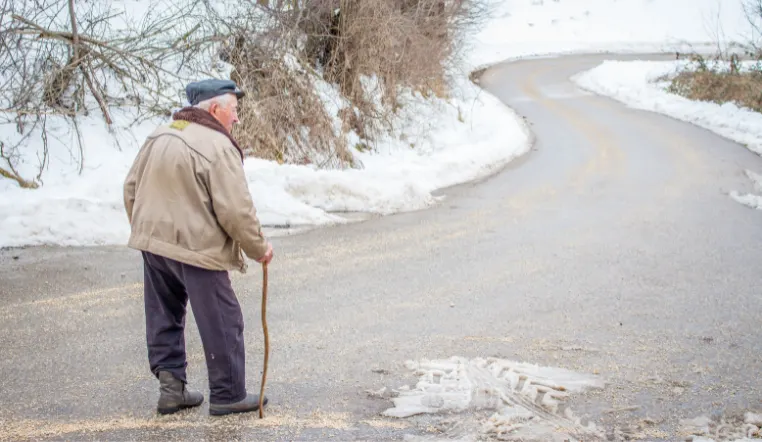As winter begins to make its return, caregivers who have a loved one living with Alzheimer’s disease should be prepared. One way to do so is by developing an Alzheimer’s Wandering Kit. If the unthinkable happens and your loved one wanders on a cold and snowy winter day, this kit can help rescue workers launch their search more quickly.
Alzheimer’s Disease and Wandering
One of the most difficult behaviors Alzheimer’s disease is responsible for is wandering. According to The Alzheimer’s Association, six in ten people living with Alzheimer’s will wander at some point as their disease progresses. It can happen at any stage of the disease. Statistics show that when a senior with dementia is missing, every minute counts. Their safe return is dependent upon finding them quickly, especially during the winter months.
Creating an Alzheimer’s Wandering Kit
An Alzheimer’s Wandering Kit can help you give emergency responders the information they need to immediately launch their search. It also gives the local media what they need to help spread the word.
Here is what you should include in your kit:
1. Recent Photos. Current photos that are a clear representation of how your loved one looks today are important. A head shot and a full-length image are best. If you have home videos those can also be of help.
2. Written Description. Take time to write out a full and complete description of your loved one. Include their hair color, eye color, height, and weight. Also list any distinguishing characteristics they have. It might be a prominent birth mark, physical impairment, tattoo or scar.
3. Medical History. Your kit needs to include a medical history complete with medications, health conditions, allergies, and physician information. Document and attach anything that first responders may need to know in the event your family member is found and in need of medical attention.
4. Emergency Contact Information. Provide emergency responders with the names and phone numbers of several family members and friends who are familiar with your senior loved one’s condition. You want to make it as easy as possible for them to quickly get in touch with one of you during the search.
5. Familiar Places List. Providing emergency responders with the names and addresses of places your loved one may be trying to get to might aid them in the search. Include those places that are familiar to them from their past such as their church, a family member home or their previous place of employment.
6. Vehicle Information. If your family member is still actively driving, include a description of their car and photos of it in your Alzheimer’s Wandering Kit. Police will need to know the make, model, year and license plate number of the vehicle.
Be sure to provide family members and friends who may help with caregiving with a copy of the kit once it is completed.
To learn more about the steps you can take to try to prevent wandering, please visit the Wandering and Getting Lost.


